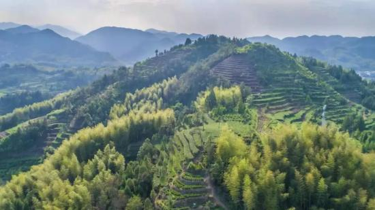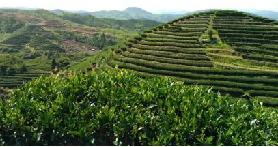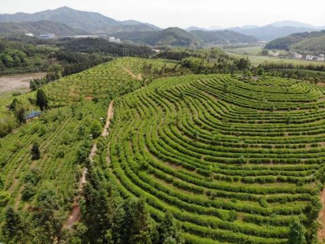White Tea — The soil and water of one place nurture a good tea leaf
White Tea is one of the six major categories of Chinese Tea. Originating from Fujian province, Fuding, Zhenghe, Jianyang, and Songxi are the four main core producing areas in Fujian. Along the southeastern coastal region of China, latitude 26-27°N, with warm climate, abundant rainfall, high forest coverage, the unique natural geographical environment and climate nurture the distinctive Fujian white tea.
Fuding White Tea - Delicately Fragrance of Tea Hair and Refreshing
Fuding is located in the northeast of Fujian Province, with a majority of hilly terrain. The main peak of Taimushan Mountain in the south reaches an altitude of 917.3 meters. With abundant rainfall, the climate here is mild, warm and humid. It is suitable for tea trees to absorb the sunshine, rains and dews from high elevations. White Tea from Fuding has obvious fragrance of tea hair and refreshing palate.
Fuding Dahao white peony white tea: leaves attached buds, plenty of buds cover with tea hairs, the bud has silver-white center. The tea leaves are plump and tender. The tea soup aroma is fresh, tender, and high with delicate fragrance. The taste is pure, refreshing with lingering sweetness aftertaste.
Zhenghe White Tea - Rich Fragrance and Mellow Taste
The terrain in Zhenghe descends from east to west, with "80% of mountains, 10% of water and 10% farming field". The place has a distinctive dual geographical climate of high mountains and plains. Because there is a great number of mountains, complex terrain, and big disparity of altitude, the climate environment, forming in multi-hierarchy and multidimensional, is nurturing the unique essence and charm of Zhenghe white tea.
Zhenghe Da Bai white tea: leaves embracing buds, buds and leaves are joined by stem. The leaf edges are curled downward, and the buds are plump with visible white tea hairs. It has rich fragrance and long-lasting aroma. The taste is sweet, refreshing and mellow. The soup flavor is rich and complex.
Jianyang Narcissus White Tea - The Aftertaste is Fragrant
Jianyang is located in the southern foothills of the Wuyi Mountains, known as the "Forest-Bamboo Sea Village". It is a hill region with deep and fertile soil. The area has a subtropical monsoon climate, featuring abundant sunshine, large temperature differences between day and night, and concentrated rainy seasons. Jianyang is the birthplace of white peony, Gong Mei, Shou Mei, and Narcissus White. In history, "Narcissus White" was often used as a blending grade for high-grade white peony.
Fujian Jianyang Narcissus White: We call it "fairy charm". The aroma is strong and long-lasting. The taste is mellow, thick and sweet. The aftertaste has fragrance. The tea has the distinctive characteristics of the Narcissus variety.
Songxi Jiulong Da Bai White Tea - Fresh, Sweet and Mellow
Songxi is located on the southeast side of the Wuyi Mountains. This place has a subtropical humid monsoon climate and is situated among mountains and river valley plains, with a complex of low hills and basins. On July 22, 2016, Songxi was named the National Ecological County.
Songxi Jiulong Dai Bai White Tea: The fragrance is fresh, tender and long-lasting. The taste is sweet, fresh and mellow. It has a very unique localized characteristics of high mountains and beauty of greenery.
 |  |  |  | |
| Tea Garden in High Mountain Fuding | Tea Garden in High Mountain Zhenghe | Tea Garden in High Mountain Jianyang | Tea Garden in High Mountain Songxi |
Due to differences in region, variety, and craftsmanship, the white tea from eastern and northern part of Fujian vary in quality and flavor. The raw tea leaves from the four core producing areas, Fuding, Zhenghe, Jianyang, and Songxi, fully embody the unique quality advantages of Fujian origination, showcasing the enchanting charm of each area by their distinctive performances.
Sources: China Tea (Fujian) , Feb.27, 2024






 EN
EN
 AR
AR NL
NL FR
FR IT
IT JA
JA KO
KO PT
PT RU
RU ID
ID MS
MS